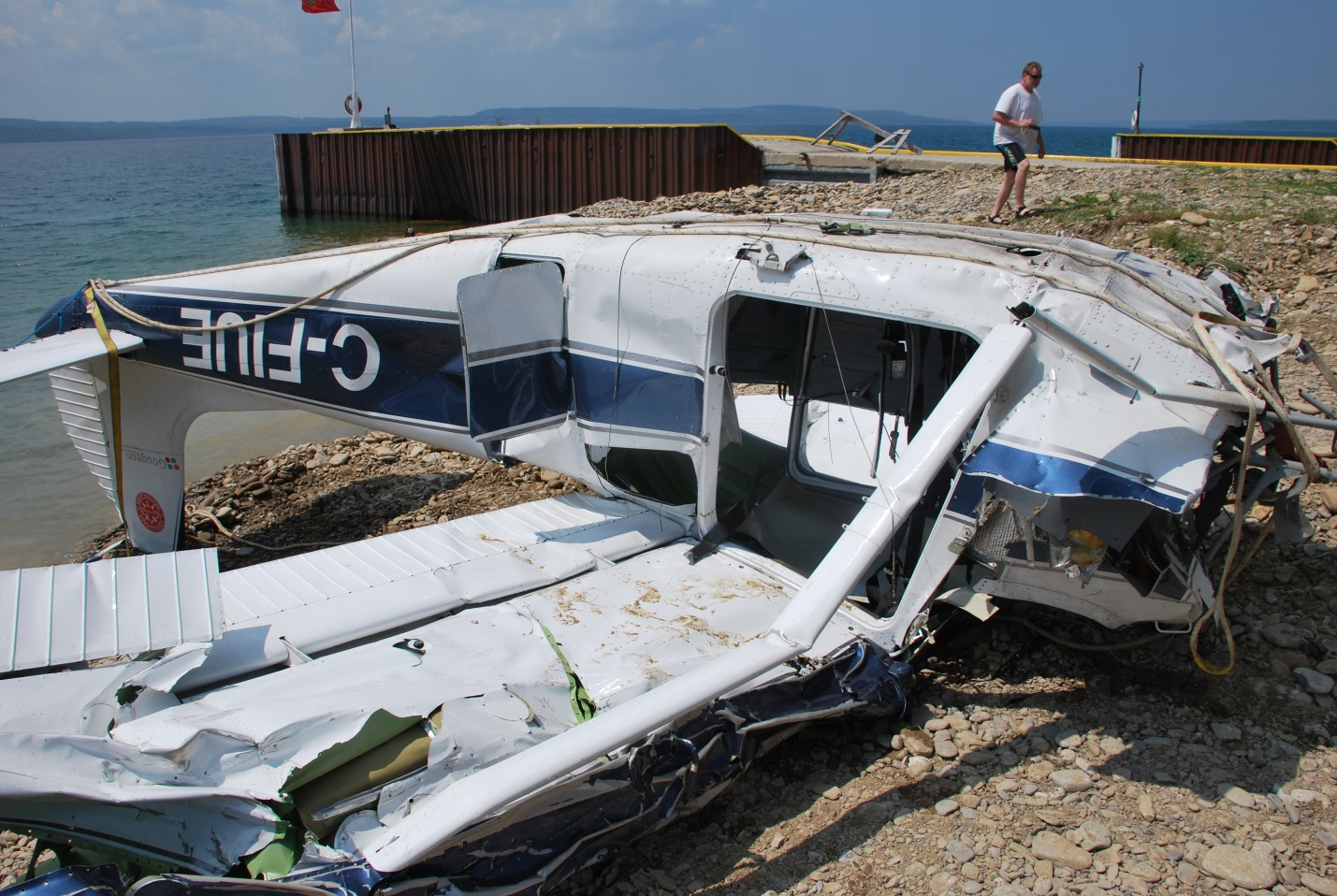Air transportation safety investigation A13O0125
The TSB has completed this investigation. The report was published on 10 September 2014.
Table of contents
Loss of control and collision with water
Cessna 182, C-FIUE
Griffith Island, Ontario
The occurrence
The privately registered Cessna 182 equipped with amphibious floats (registration C-FIUE, serial number 33120) had departed Makada Lake, Ontario, with the pilot and 1 passenger on board to pick up another passenger at Little Panache Lake, and then continued to Griffith Island, located in Georgian Bay on Lake Huron. One pilot and 2 passengers were on board. While conducting a visual approach to Runway 27 at Griffith Island, the aircraft aerodynamically stalled and collided with the water approximately 1000 feet southeast of the runway threshold. The accident occurred during daylight hours, at approximately 1345 Eastern Daylight Time. The aircraft was destroyed by impact forces, and there were no survivors. The aircraft was equipped with an emergency locator transmitter, which activated. However, no signal was received due to submersion of the antenna.
Media materials
News release
Georgian Bay 2013 accident underscores the need to document aircraft modifications and adhere to strict weight allowances
Read the news release
Deployment notice
Transportation Safety Board of Canada to deploy investigators to air accident in Georgian Bay, ON
Richmond Hill, Ontario, 4 July, 2013 - The Transportation Safety Board of Canada (TSB) will deploy investigators tomorrow to Georgian Bay, Ontario, where a floatplane was involved in an accident near Griffith Island. The TSB will gather information and assess the occurrence.
Investigation information
Map showing the location of the occurrence
Investigator-in-charge

Mr. Rowntree has 26 years of civil aviation experience. He joined the TSB in November 1997 as an investigator/technical specialist in the TSB Air Investigations Ontario Regional Office, in Richmond Hill, Ontario
Prior to joining the TSB, he worked as an aircraft maintenance supervisor in the arctic for a major Canadian air carrier. During that time, he maintained and supervised the maintaining of different aircraft types, from small aircraft to the larger commuter and jet aircraft. Mr. Rowntree was also certified flight attendant and volunteer fire fighter.
Since joining the TSB, Mr. Rowntree has participated in numerous investigations and several major TSB investigations, most notably; the 1998 investigation into Swiss Air 111 in Peggy's Cove, Nova Scotia, the 2004 investigation into the MK Airlines accident in Halifax, Nova Scotia, the 2005 investigation into Air France accident in Toronto, Ontario, the 2009 Cougar Helicopter accident in St. John's, Newfoundland and the 2011 First Air accident in Resolute, Nunavut. On behalf of the TSB, he has also assisted numerous foreign investigation agencies in their investigations of accidents abroad.
Photos
Click on the images to see them in full size.
Download high-resolution photos from the TSB Flickr page.
Class of investigation
This is a class 3 investigation. These investigations analyze a small number of safety issues, and may result in recommendations. Class 3 investigations are generally completed within 450 days. For more information, see the Policy on Occurrence Classification.
TSB investigation process
There are 3 phases to a TSB investigation
- Field phase: a team of investigators examines the occurrence site and wreckage, interviews witnesses and collects pertinent information.
- Examination and analysis phase: the TSB reviews pertinent records, tests components of the wreckage in the lab, determines the sequence of events and identifies safety deficiencies. When safety deficiencies are suspected or confirmed, the TSB advises the appropriate authority without waiting until publication of the final report.
- Report phase: a confidential draft report is approved by the Board and sent to persons and corporations who are directly concerned by the report. They then have the opportunity to dispute or correct information they believe to be incorrect. The Board considers all representations before approving the final report, which is subsequently released to the public.
For more information, see our Investigation process page.
The TSB is an independent agency that investigates air, marine, pipeline, and rail transportation occurrences. Its sole aim is the advancement of transportation safety. It is not the function of the Board to assign fault or determine civil or criminal liability.

